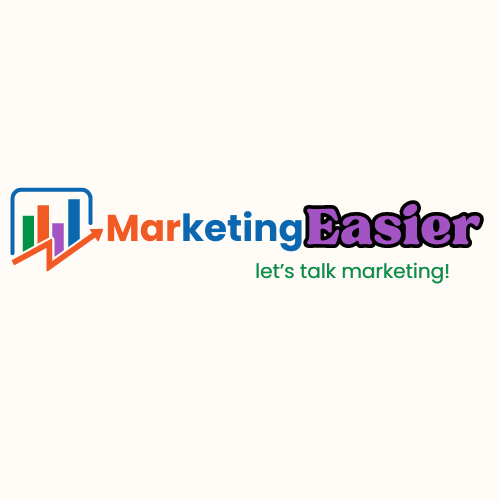
Personal selling is one of the oldest professions. Salespeople go by many names, including sales representatives, account executives, sales consultants, and sales engineers.
Table of Contents
ToggleIn today’s digital age, where impersonal marketing tactics abound, personal selling remains a powerful tool for building long-term relationships with customers, understanding customer needs, and ultimately, closing deals.
In this article, we will explore the meaning of personal selling, its techniques, appropriate usage scenario for personal selling.
What is personal selling?
Personal selling is the art and science of directly interacting with potential customers to understand their needs, present product or service benefits, and guide them toward a purchase decision. It’s a collaborative process built on trust and communication.
Personal selling has evolved beyond physical meetings to include telesales, email marketing, sales promotion, advertising, and public relations.
Understanding the role of personal selling
- Building Relationships: Building relationships is an essential aspect of personal selling. It facilitates the creation of strong connections with customers, which leads to loyalty and repeat business.
- Tailored Solutions: Through understanding customers’ specific needs, salespeople can present tailored solutions, increasing the value perception of their products or services.
- Overcoming Objections: By effectively communicating with customers, salespeople can overcome objections and address doubts and concerns, paving the way for a confident purchase.
Techniques for Effective Personal Selling
A few essential strategies will help you become an expert in the field of personal selling. Let’s explore some of these strategies that can result in profitable personal selling.
1. Identifying the Right Leads
Finding the right prospects is important for ensuring a strong Return on Investment (ROI) because personal selling requires more investment.
Factors to consider can include:
- The potential value of the sale
- The size of the business being sold to
- The relevance of the product or service to the business
- Potential for future business opportunities
- The effectiveness of a sales meeting in closing the deal
- The value that can be added during a sales meeting
2. Preparation is Key
Preparation is crucial for successful sales. According to a study, 82% of B2B buyers believe that sales representatives are often unprepared, which can discourage potential buyers.
To change this perception, sales reps should spend time getting to know the potential customer’s needs, the benefits that product or service offer, and providing relevant information as much possible to persuade customers to purchase it.
This involves actively listening, taking notes, and adjusting the sales pitch to address the company’s specific challenges and objectives.
3. Adding Value in Meetings
Successful sales reps understand the importance of adding value during meetings. This can be achieved by providing relevant and actionable data related to the prospects. Present your product not just as a product, but as a solution to their specific problems and needs.
Don’t dictate, work with the customer to find the ideal solution.
4. Building a Partnership

During sales meetings, successful sales reps often use collaborative language, such as “we” and “us,” instead of “I” and “me.” This approach helps to create a sense of partnership and cooperation with potential clients.
5. Storytelling
An effective sales pitch goes beyond just presenting facts and figures. It’s about telling a compelling story that resonates with the potential customer. Remember, 63% of prospects remember stories, compared to just 5% who remember statistics.
6. Encourage a Conversation
Encourage customers to share their needs and concerns and respond to them in a thoughtful and personalized manner. Personal selling involves listening as much as talking.
7. Act as a Consultant
Instead of just trying to make a sale, aim to provide valuable advice and solutions to the customer. This approach can build trust and lead to long-term customer relationships.
8. Emphasize Customer Satisfaction
Make sure the customer feels valued and satisfied with their purchase. This can lead to repeat business and positive word-of-mouth referrals.
9. Respond to Consumer Behavior
Pay attention to the customer’s behavior and adjust your selling techniques accordingly. For example, if a customer seems hesitant, it might be necessary to provide more information or reassurances.
Scenarios for Personal Selling
While personal selling can be applied in various business scenarios, it’s particularly effective when:
- Selling a highly specialized product
- Targeting a small market with a few large buyers
- Selling a high-end or complex product
- Competing in a highly competitive market
- Funds are limited for other advertising channels
- Leveraging trade shows or exhibitions
Conclusion
Personal selling is a potential tool in the marketing arsenal, offering a unique blend of direct interaction and relationship-building. It’s not just about making a sale; it’s about understanding the customer’s needs, providing value, and building trust.
The personal selling process is a several techniques that includes identifying the right leads, collecting information about customer needs and wants, adding value in meetings, building partnership with customers, storytelling. Each technique is crucial in ensuring a successful sale and a satisfied customer.
Personal selling ensures uniformity in consumption by selling standardized products. It addresses the buyer’s needs and performances without making them feel pressured. This technique is effective in sales promotion.
Moreover, personal selling plays a significant role in the promotion mix and is vital for services’ marketing communication. It takes into account cultural differences and competencies in the international environment.
Frequently Asked Questions
- What do you mean by personal selling?
Personal selling is the direct interaction with potential customers to understand their needs, present product benefits, and guide them towards a purchase.
- What's an example of personal selling?
An example of personal selling is a car salesperson meeting with a potential customer to show them different car models and discuss their features. This involves direct, one-on-one interaction, where the salesperson not only presents the product but also listens to the customer’s needs, provides tailored solutions, and builds a relationship of trust.
- What are the 3 types of personal selling?
The three types of personal selling are:
- Order Takers: They receive requests and queries from customers.
- Order Creators: They create demand and interest in the product.
- Order Getters: They actively seek out orders from customers. These categories are based on the sales activity and the role of the salesperson.
- What's the difference between selling features and benefits?
Features are product qualities (e.g., battery life). Benefits are the advantages those features offer (e.g., long-lasting power for extended trips).
- How do I prepare for a successful sales meeting?
Become an expert on your product, research the customer's needs, and anticipate potential objections to address them proactively.
- How can I identify the right sales leads?
Focus on leads with the budget, decision-making authority, and a clear need for your product or service.
- What are the key skills for a successful salesperson?
Active listening, powerful questioning, clear communication, and the ability to build rapport are all crucial.
- Why is personal selling still important?
Even in the digital age, personal selling builds trust, tailors solutions, and effectively addresses customer concerns, leading to higher conversion rates.
- Where is personal selling used?
It's used in various settings, including B2B sales, B2C interactions in stores or online, and high-ticket sales involving large contracts.
- What are some of the challenges of personal selling?
Facing rejection, keeping up with competitor offerings, and adapting to changing customer needs are common challenges.
- What are the 4 basic selling techniques?
The 4 basic selling techniques are:
SPIN Selling: This technique focuses on the quality of questions a salesperson asks. SPIN is an acronym for the four types of questions on which this technique is based: Situation, Problem, Implication, and Need-payoff.
Consultative Sales Approach: This strategy puts the salesperson in an advisor role and takes the sales pressure off both the customer and the sales agent. It involves understanding the customer’s needs and providing solutions.
Understanding and Preempting Sales Objections: This technique involves understanding the most common objections that customers have and addressing them proactively.
Extensive Research on Prospects: Preparation is key to successfully directing a meeting with a prospect. This involves researching the prospect extensively to understand their needs and how your product or service can meet those needs.


